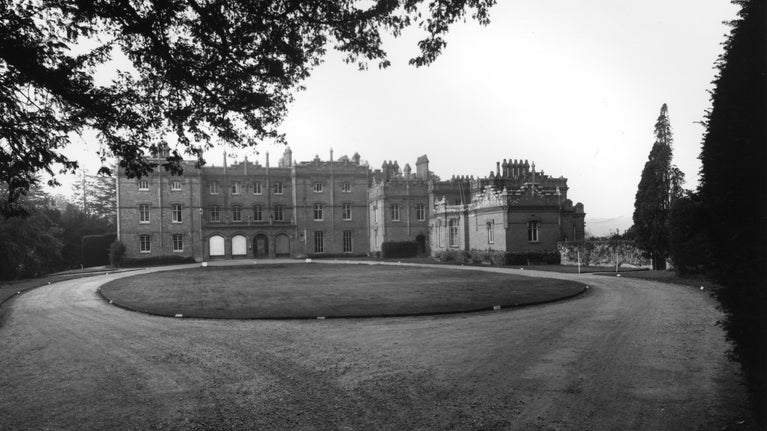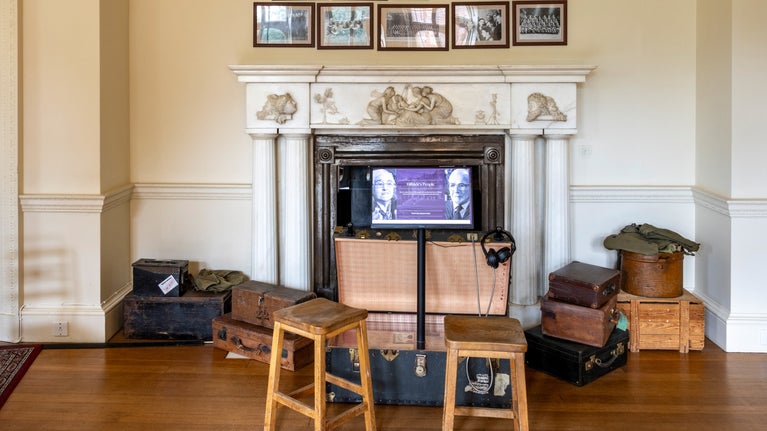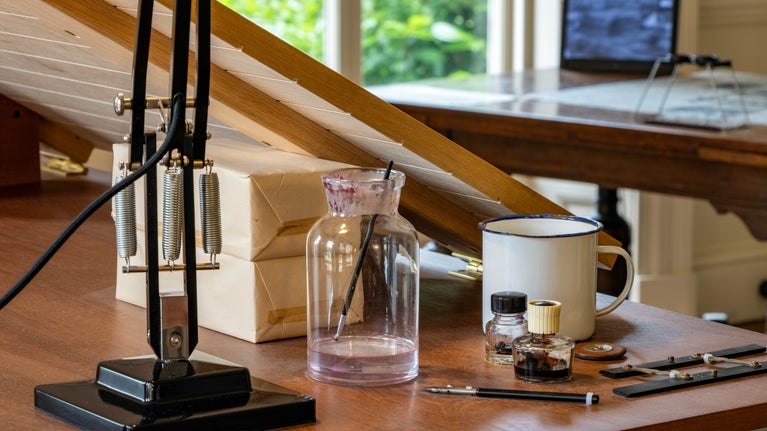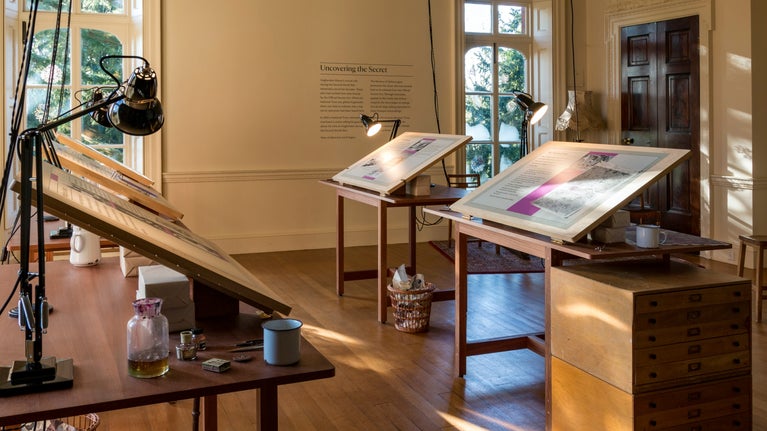Hillside – Hughenden’s Second World War Secret

In 1941, during the Second World War, The Air Ministry requisitioned Hughenden Manor and transformed it into a secret centre of map making for RAF Bomber Command, codenamed Hillside.
The Requisitioned Manor
Nearly every room in Hughenden Manor was used in the production of the maps. The Victorian furnishings were put into storage in the basement, ceilings were painted white to maximise light and electric cables were installed. Much of the ground and first floors became drawing offices. Only Disraeli’s study and his books in the library were left untouched for the duration of the war.

Life at Hillside
There were approximately 100 men and women based at Hughenden. 60% were RAF, and 40% civilian. The whole unit was commanded by an army officer and Royal Engineer, Major Quaife.
Civilian recruits included individuals who had been artists, cartoonists, architects, graphic designers, commercial mapmakers, or printers before the war. These pre-war careers had provided them with the artistic skills, including a meticulous attention to detail, which would be essential for making the maps. Some were as young as 18 years of age.
Many were brought to Hughenden not knowing where they were going, or the job that they would be doing. Sometimes new recruits arrived in the middle of the night; one of many efforts to keep Hillside top-secret.
There was not enough room at Hughenden to accommodate everyone and so personnel were billeted in local houses and travelled to the manor on bicycles. Only Sergeant Hadfield, who oversaw security, lived in a flat on the top floor of the manor with his wife, two children and Scottie dog, Jane.
Hillside personnel worked from 8:45am until 5:45pm on weekdays, and a half day on Saturdays. Lunch was provided at one shilling and sixpence and served on the top floor. Days off were on Sundays, but urgent work and fire watch duty sometimes required round the clock efforts.

Impact
Initially, the targets identified were factories and enemy infrastructure, the goal being to interrupt the enemy’s ability to fight the war.
As war progressed, both sides began to target cities and residential areas in the belief that this would weaken morale and force the enemy to surrender. It is important to remember that there were huge losses on both sides during the war.
Kathlyn Hudson summed up this awful dilemma in the following quote: ‘With every new map I was given to draw, I put my hands together and said: please God, don’t let this kill any children’.
One Hillside worker was asked, during an interview, if he realised the effect of his work here at Hillside. His response was: ‘I knew exactly what I was doing – My parents were Londoners and had been bombed 50 nights in a row. I wanted to do all that I could to end the war as soon as possible’.
The moral questions around the Allies’ bombing campaign are still being debated today, but the targeting of cities, made possible by the work of the Hillside personnel, did help to bring the conflict to an end. The maps produced here improved the accuracy of bombing raids and helped to shorten the war.

Post war
Following the war, everything to do with mapmaking was removed from the manor and Hughenden was handed over to the National Trust in 1947. The only items included in the bequest that gave any hint to the work of the mapmakers was the map of Berchtesgaden and a small book of photographs.
On a seemingly normal day at Hughenden in 2004, a gentleman was overheard while visiting the Drawing Room. Speaking to his young grandson, he said; ‘it wasn’t like this when I was here, during the War’. ‘The War’, thought the room guide. ‘But we don’t know what happened at Hughenden during the War’.
Little did we know that this chance encounter would change the way we understood Hughenden forever.
This visitor was Victor Gregory. A mapmaker during the Second World War, recruited at the age of 18 and sent to Hughenden. At this time the manor was codenamed ‘Hillside’ and used for a top-secret operation, set up to support Bomber Command.
Still bound by the Official Secrets Act even in 2004, Victor was the starting point and the beginning of years of detective work which would lead to the revelation of Hughenden’s best kept secret.



